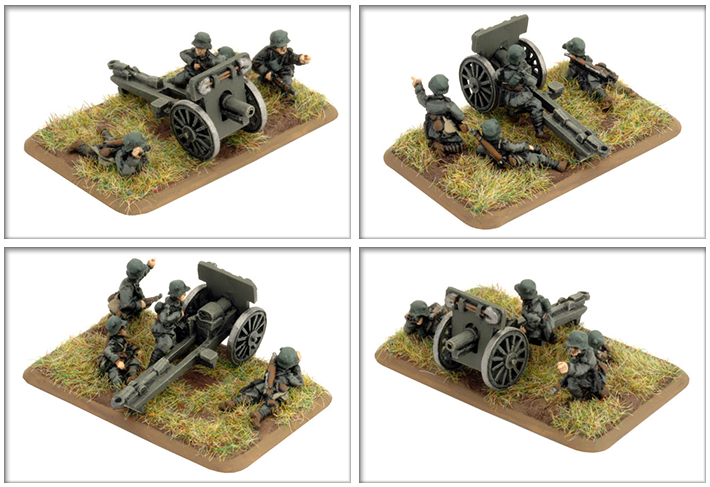Includes one Webley Pistol team, eight SMLE rifle Teams and one Hotchkiss MG team.
A Cavalry Squadron is lightly equipped with just its trench mortars and machine-guns that can be transported on horse-back, providing fire support. However, they would fight in close cooperation with the infantry and often be supported by the armoured cars or tanks of the Tank Corps.
Check out the Cavalry Troop in the online store here…
Unlike the infantry who used the Lewis, the Cavalry had adopted the Hotckiss light machinegun, a more compact design.
For heavier firepower the cavalry had their own machine-gun section armed with a pair of Vickers heavy machine-guns. Along with the trench mortars, the Vickers are called up when the cavalry encounter anything that impedes their progress.
Designed by James Brown
Painted by Jeremy Painter
The Webley Pistol Team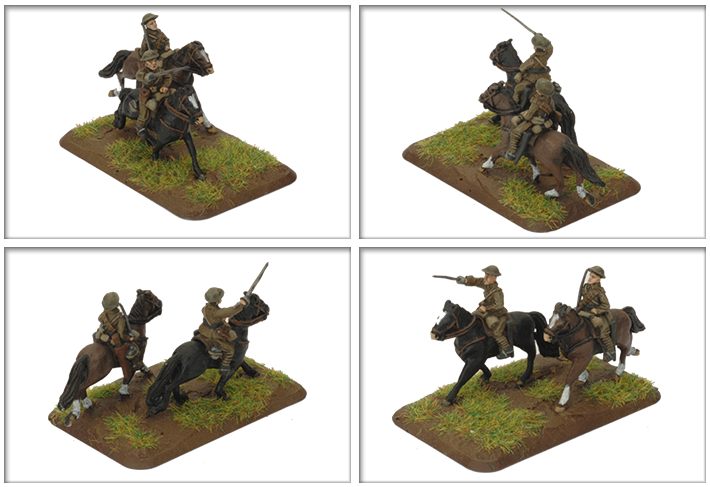
The SMLE Rifle Team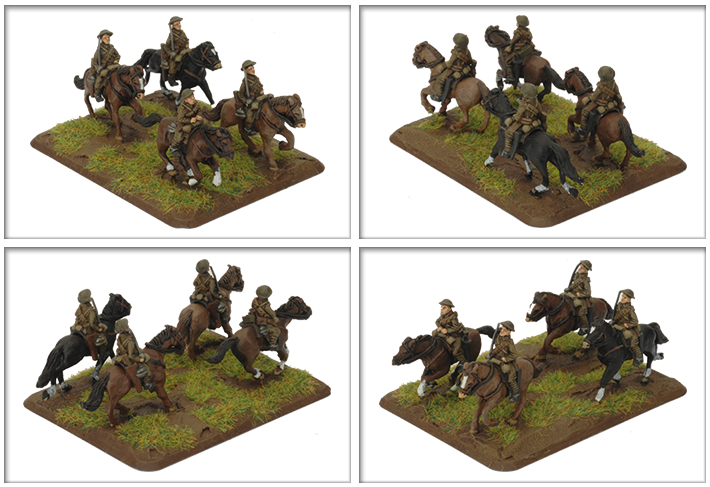
The Hotchkiss MG Team 
The Cavalry Troop in Great War
Unit cards for the Cavalry Troop are contained in the Great War British Unit Card pack (GBR901)…
 Includes two OQF 18 pdr Guns.
Includes two OQF 18 pdr Guns.
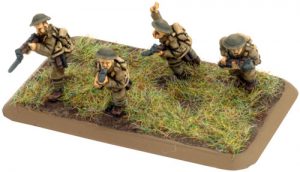 Includes one Webley Pistol Team (Formation HQ), five SMLE Rifle Teams, two Hales Rifle Grenade Teams, two Lewis MG Teams and one Sniper Team.
Includes one Webley Pistol Team (Formation HQ), five SMLE Rifle Teams, two Hales Rifle Grenade Teams, two Lewis MG Teams and one Sniper Team.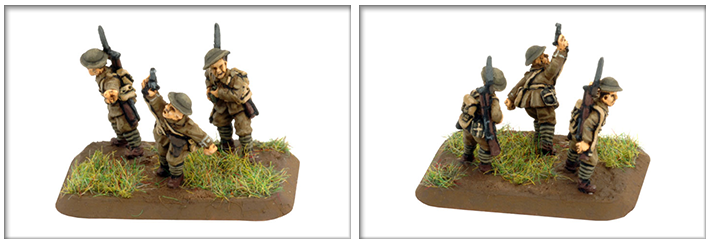
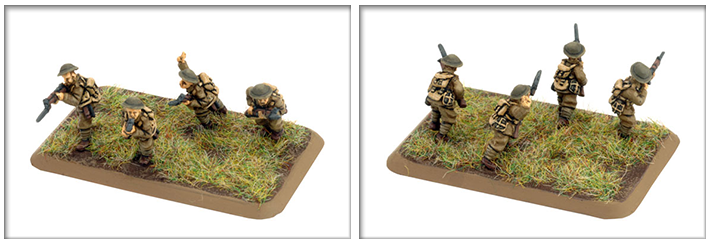
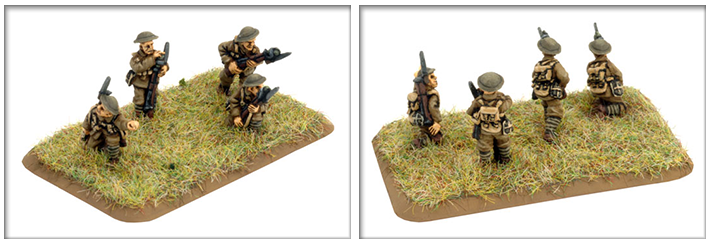
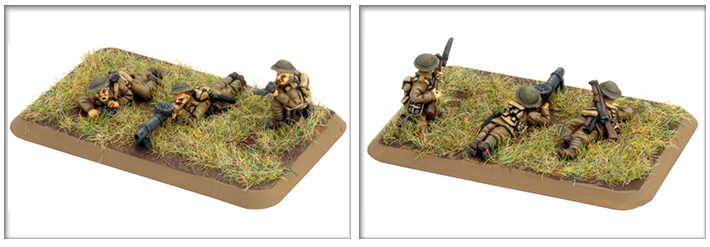

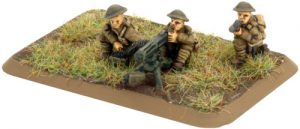 Includes four Vickers HMG Teams.
Includes four Vickers HMG Teams.
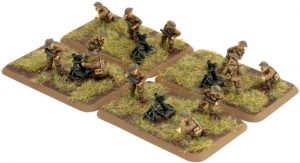 Includes four 3″ Stokes Mortar Teams.
Includes four 3″ Stokes Mortar Teams.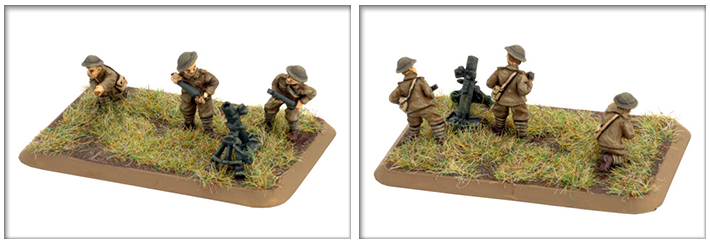
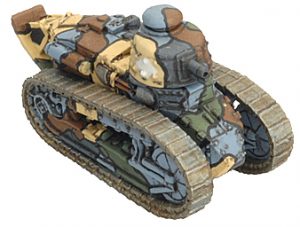 Includes one Renault FT-17 (MG) or Renault FT17 (37mm light tank.
Includes one Renault FT-17 (MG) or Renault FT17 (37mm light tank.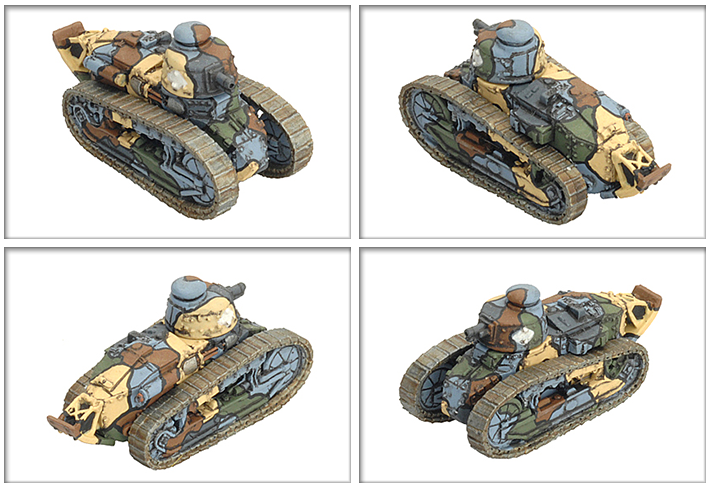
 The Renault FT-17 (MG) Tank
The Renault FT-17 (MG) Tank

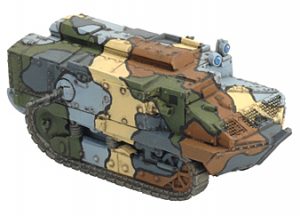 Includes one Schneider CA.1 Tank tank.
Includes one Schneider CA.1 Tank tank.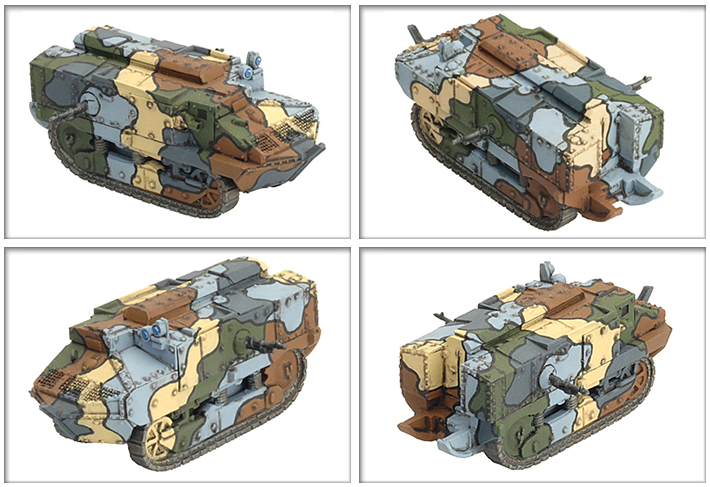
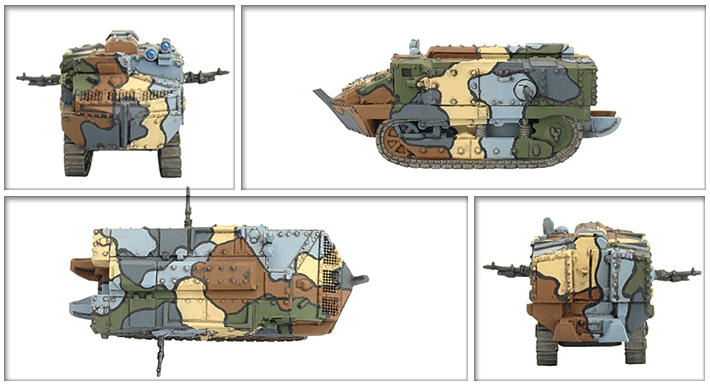
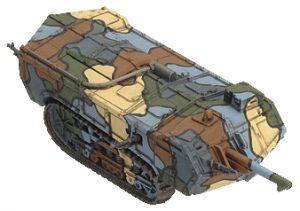 Includes one Saint Chamond tank.
Includes one Saint Chamond tank.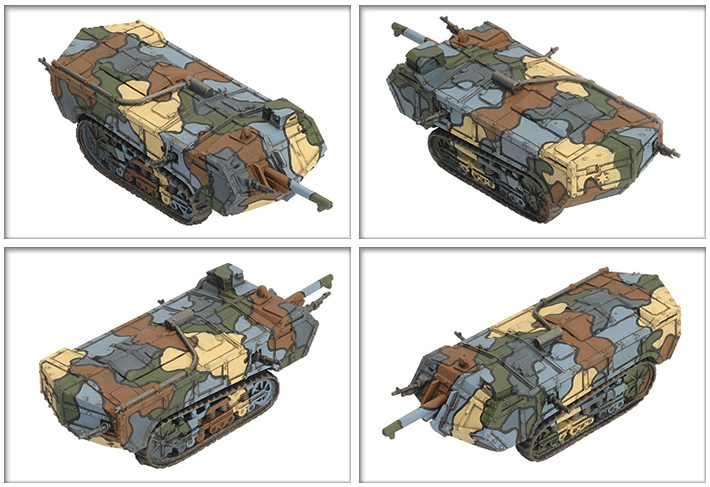
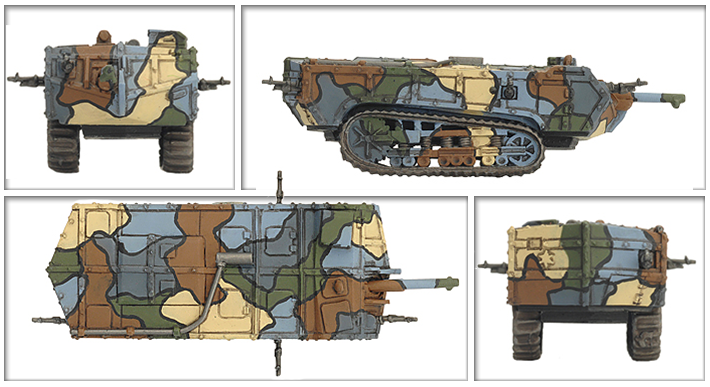
 Includes two 75mm mle 1897 Guns.
Includes two 75mm mle 1897 Guns.

 Includes two 7.62cm Krupp IG guns
Includes two 7.62cm Krupp IG guns